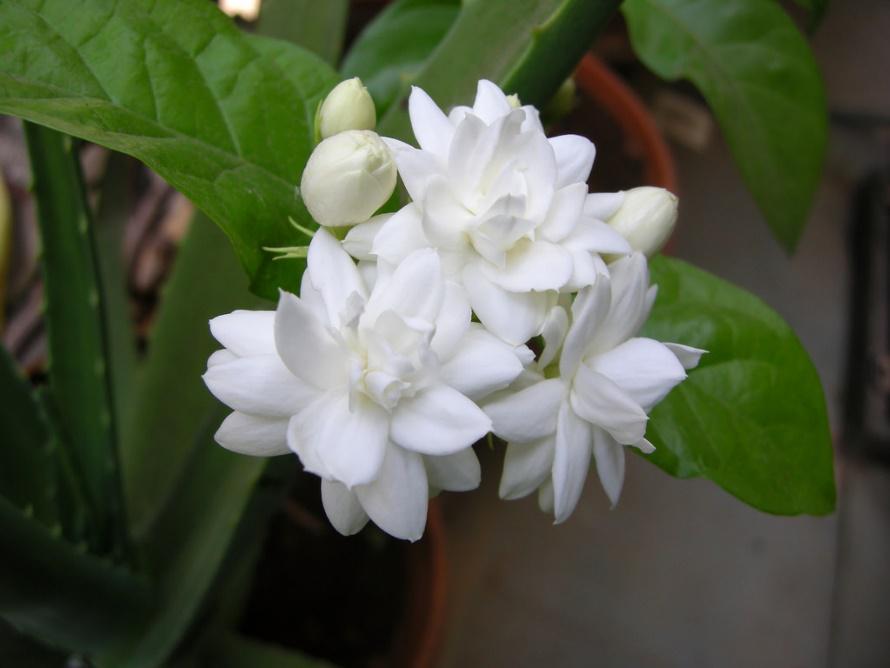
Jasminum Sambac (Mogra)
Jasminum Sambac is a small shrub or vine growing up to 0.5 to 3 m (1.6 to 9.8 ft) in height. It is widely cultivated for its attractive and sweetly fragrant flowers. The flowers may be used as a fragrant ingredient in perfumes and jasmine tea.
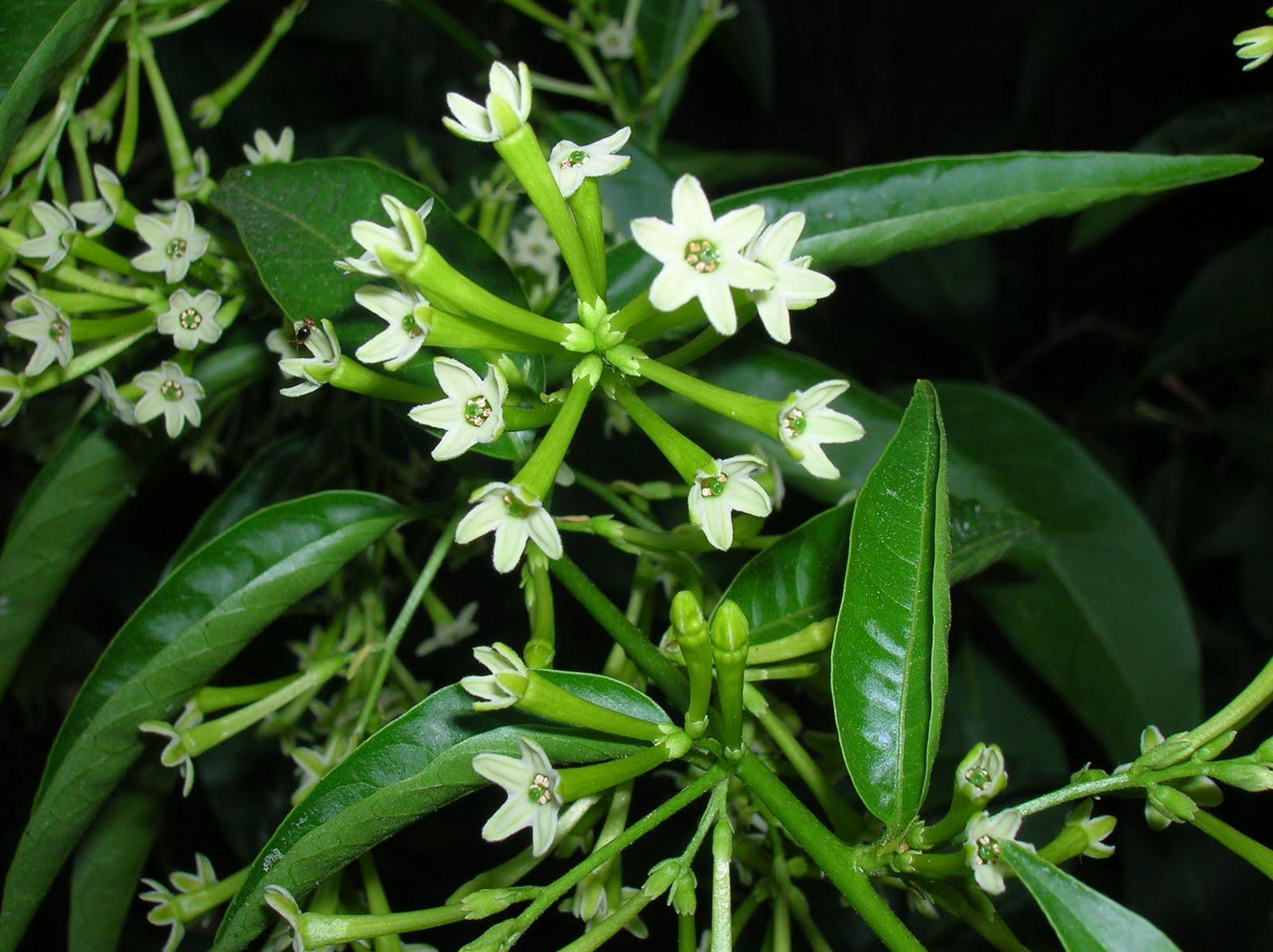
Cestrum nocturnum (Night Queen)
Night-blooming jasmine is an evergreen woody shrub. The flowers are greenish-white, with a slender tubular corolla 2–2.5 cm (0.79–0.98 in) long with five acute lobes, 10–13 mm (0.39–0.51 in) diameter when open at night, and are produced in cymose inflorescences. A powerful, sweet perfume is released at night.
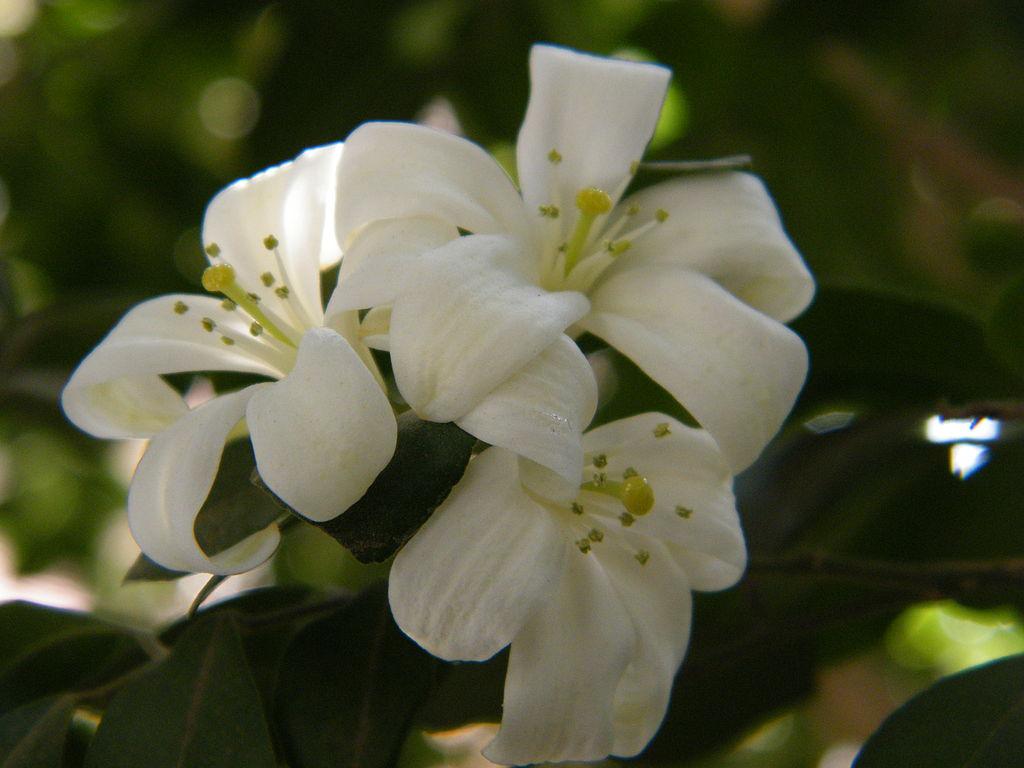
Kamini
Kamini (Orange Jessamine) is a small, tropical, evergreen tree or shrub growing up to 7 m tall. The plant flowers throughout the year. Flowers are terminal few-flowered, dense and fragrant. Petals are 12–18 mm long, recurved and white (or fading cream). The fruit of Murraya paniculata is fleshy, oblong-ovoid, coloured red to orange, and grows up to 1 inch in length.
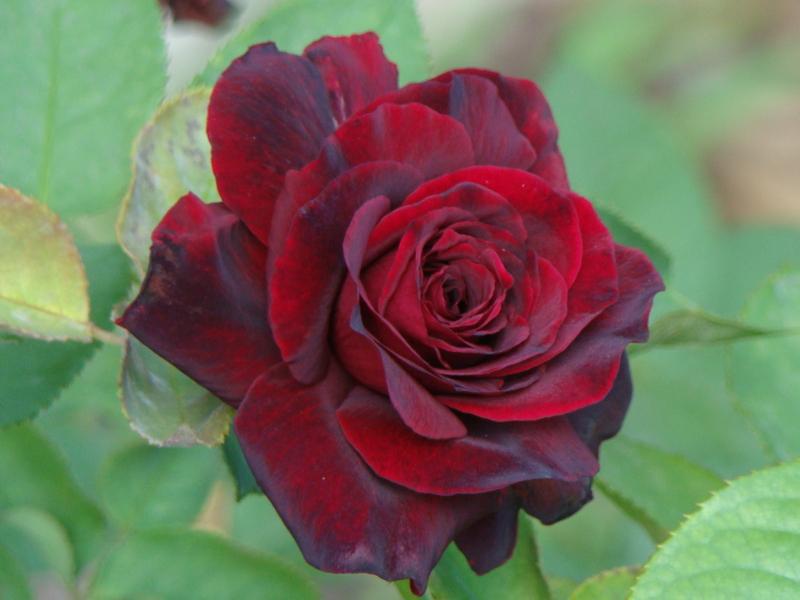
Rose: (Variety - Black lady; Type – Hybrid Tea)
This luscious rose is dark red and produces a strong fragrance. Medium, double bloom form. Blooms in flushes continuously. A beautiful red rose to compliment other colors in the garden.
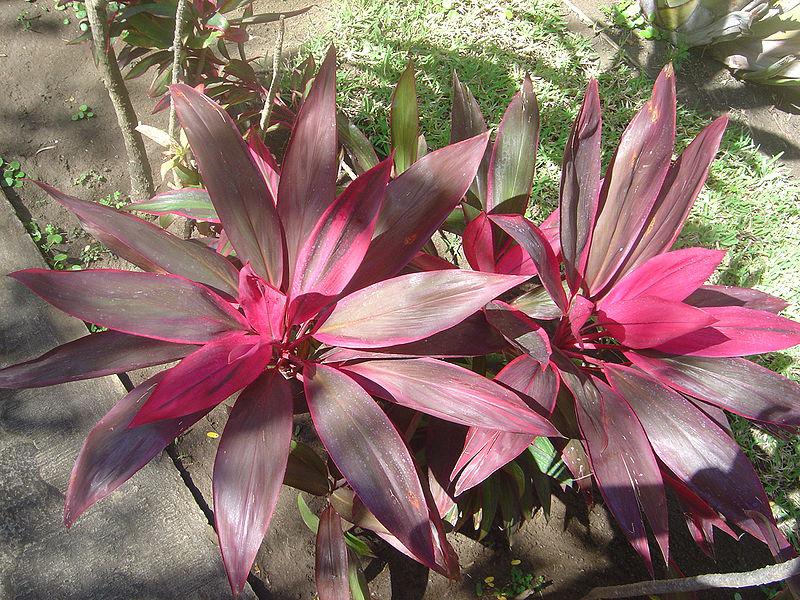
Cordyline
Many Cordylines come from Hawaii but there are also species native to South America, New Zealand, parts of Asia, New Guinea, the islands of the Pacific, Mauritius and eight species native to Australia. Cordylines come in many colors or combination of colors including many shades of greens, reds, pinks, purples, yellows, oranges, cream and white. The Australian species are mostly green but occasionally variegated forms are found, these are highly prized by collectors. Cordylines have a large range of leaf shapes and sizes with some varieties, with foliage up to a meter long with proportionate width. Some have compact leaves of only a few centimeters in length while others have narrow strap like foliage.
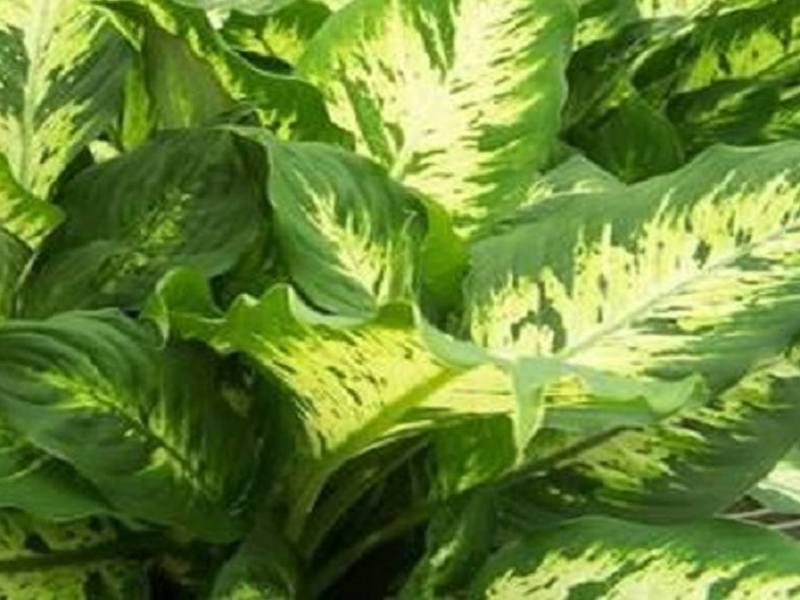
Dieffenbachia:
Dieffenbachia Native to Central and South America and a relative of our skunk cabbage, Dieffenbachia is a broad-leaved foliage plant with thick succulent stems. A popular house plant because of its ease of culture, it is available in a variety of leaf patterns.
Dieffenbachia’s common name, Dumbcane, comes from the fact that all plant parts contain raphides; crystalline, needle-like structures which are ejected when cell walls are damaged. Raphides are believed to be a defense mechanism against browsing by animals, since ingestion of the plant will cause stinging and burning to the mouth and throat with symptoms persisting for up to two weeks. This reaction can disable speech, hence its common name. Exposure to the eyes is particularly painful. Handle the plant with care when trimming or making cuttings for propagation. Small children and pets should be kept away from dieffenbachia plants.
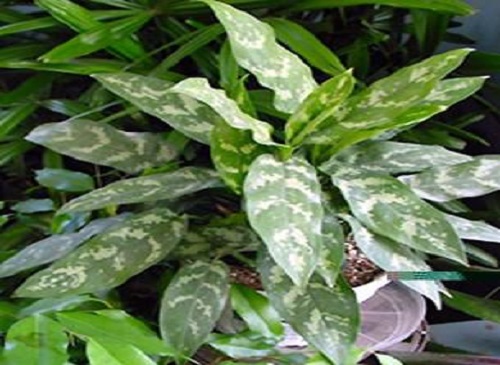
Aglaonema:
The aglaonema is a highly decorative plant with several interesting varieties. There seems to be a little controversy in the books over whether this plant is easy or difficult to grow. The simple rule to follow is this: the lighter the variegation, the more light it needs. Otherwise, these are slow growing, dependably attractive and make excellent foliage plants. They have large, narrow oval leaves on short stems.
Light: The darker green varieties can grow in near shade, while the variegated varieties require brighter light. Do not expose to direct sun.
Water: Water thoroughly in the summer, and mist often to raise humidity. During the winter, reduce watering but do not let the plant dry completely. Seek to raise humidity in general.
Temperature: They do not like cold drafts or temperatures below 65ºF. The warmer, the better.
Soil: A well-drained potting soil is perfect.
Fertilizer: Slow-release pellets or liquid fertilizer during the growing season.
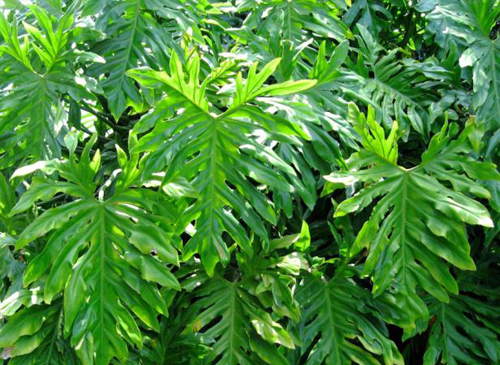
Elephant Ear Philodendron (Jannado):
Most Philodendrons are native to the jungles of tropical America, and as such, prefer the medium light intensity they would have on the jungle floor. They will tolerate low light, but if there is too little light, the new leaves will develop smaller and farther apart on the stem.
On the other hand, direct sunlight will burn the foliage, and stunt the growth of the plant.
Keep the soil evenly moist, but allow it to dry out between waterings. Keep Philodendrons slightly drier during the winter months, when the growth slows.
Over watering will cause the leaves to turn yellow.
Under watering will cause the leaves to turn brown and fall off.
Feed your Philodendron in the spring and again in midsummer with a liquid house plant fertilizer.
The ideal growing temperature is between 75 and 85 degrees F. during the day and in the 60’s at night. Philodendron Plants will survive for a short time in temperatures as low as 36 degrees F.
Wash the leaves regularly to prevent the pores from becoming plugged with dust.
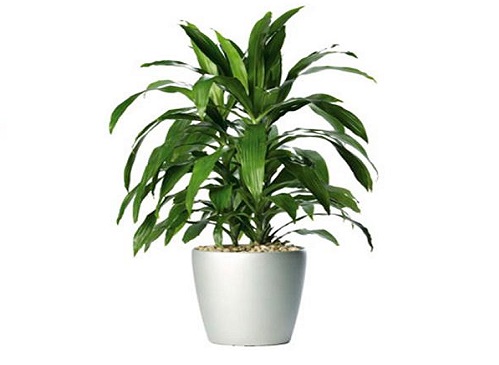
Dracaena fragrance:
Dracaena fragrans is a slow growing shrub, usually multistemmed at the base, mature specimens reaching 15m (49 feet) or more tall with a narrow crown of usually slender erect branches. Stems may reach up to 30cm (12 inch) diameter on old plants; in forest habitats they may become horizontal with erect side branches. Young plants have a single unbranched stem with a rosette of leaves until the growing tip flowers or is damaged, after which it branches, producing two or more new stems; thereafter, branching increases with subsequent flowering episodes.
Light: Dracaena fragrance enjoys medium light but can tolerate low light conditions. New leaves will narrow if there isn’t enough light and direct sunlight will bleach the leaves.
In extreme cases, Dracaena fragrance is a great plant for low-light conditions.
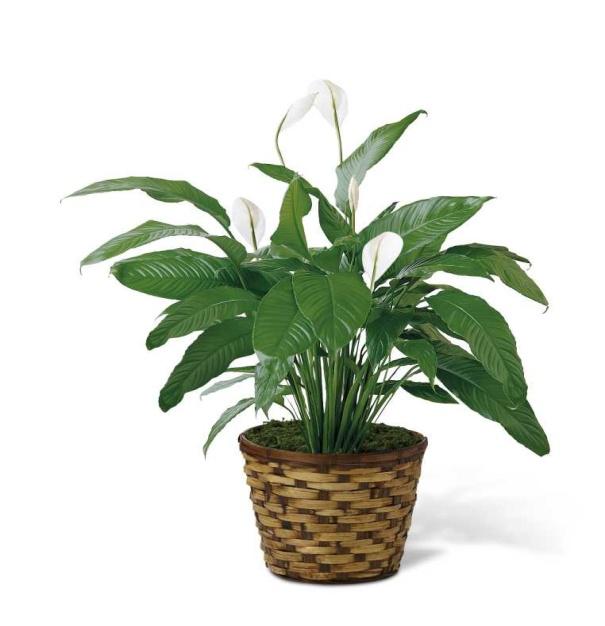
INDOOR Plants
Spathiphyllum
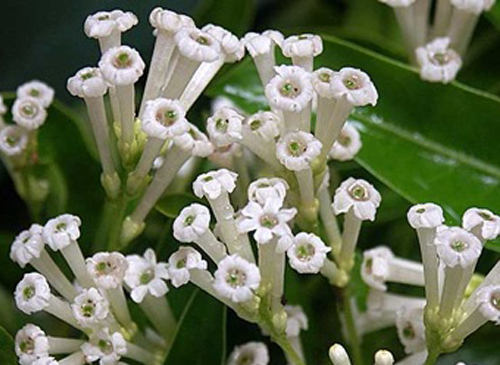
Cestrum diurnum (Din Ka Raja)
Cestrum diurnum (Din Ka Raja) is a species of Cestrum, native to the West Indies. The scent of this quick-growing and evergreen woody shrub, often used for screens and borders, is released by day. Cestrum diurnum is easily propagated from the seed, which it produces in abundance.
Copyright © 2019 Alpha Agro & Landscape Services. All Rights Reserved.
